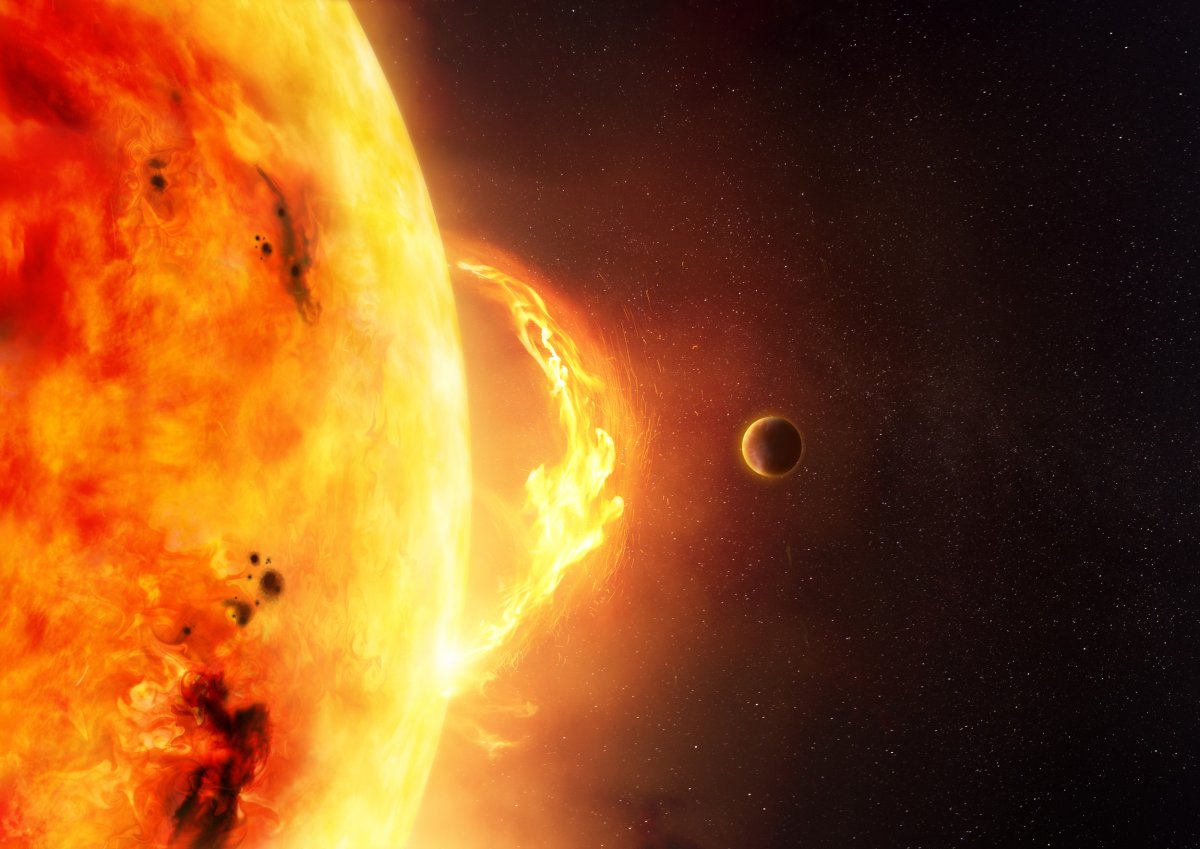A huge plume of solar plasma is due to slam into the Earth's atmosphere on Sunday, in the wake of the strongest solar flare of the sun's 11-year solar cycle so far.
The huge flare erupted from the sun's sunspot 3514 on December 14, and clocked in as an X2.8-class flare, making it the most powerful solar storm the sun has seen since September 2017. The flare caused a deep shortwave radio blackout across North and South America.
The coronal mass ejection (CME) of solar material due to glance past the Earth on Sunday was released at the same time as the flare, but has taken much longer to reach us. The event may lead to power issues, satellite problems, further radio blackouts, and even auroras being visible as far south as Illinois and Oregon.
Solar flares and CMEs are released from areas of the sun that have strong magnetic activity, such as sunspots: where a solar flare is a muzzle flash of bright electromagnetic radiation, a CME is a cannonball of solar material and magnetic field.
The CME forecast to hit the Earth on Sunday is thought to be travelling at around 4.7 million mph. It is predicted to cause geomagnetic storms in the atmosphere when it arrives, possibly as strong as category G2 (Moderate) or G3 (Strong) ones. Geomagnetic storms occur because of disturbances in the Earth's magnetic field caused by the CME.
G2 and G3 storms can lead to problems with the power grids, scramble radio waves and even cause increased drag on satellites orbiting close to the Earth's atmosphere, requiring adjustments of orbits and voltage corrections.
Additionally, more powerful geomagnetic storms cause the northern lights to be seen much further south than usual.
"Aurora, northern or southern lights, are caused by the variable solar wind buffeting the Earth's magnetic field and dumping large amounts of energy and particles into the Earth's atmosphere," Gareth Dorrian, a research fellow in space science at the University of Birmingham, England, told Newsweek. "As these particles collide with molecules of air, they generate fluorescence; just like when an electric current is passed through gas in a fluorescent light. This colorful emission of light is what we see as aurora."
The National Oceanic and Atmospheric Administration (NOAA) says that G2 storms can result in the aurora being seen from New York and Idaho; and G3 storms can cause the lights to reach as far as Illinois and Oregon.
Spectacular global disturbances from an energetic CME on 2023/12/14. It was associated with an X2.8 flare in AR 13514. We see >10 MeV protons are increasing, but it is not clear if the flux reaches 10 pfu (NOAA S1 level). This CME may only glance Earth at best. pic.twitter.com/X3id9CeBBk
— Halo CME (@halocme) December 15, 2023
Solar flares are also classed by how powerful they are, on a scale of A, B, C, M and X, with X-class flares being the strongest. Each class is 10 times stronger than the previous, with an X1 flare being 10 times more powerful than an M1, and 100 times more powerful than a C1. X-class flares are the least common form of solar flare, and occur only around 10 times each year.
"Solar flares are where areas of solar activity (normally seen as sun spots) suddenly realign or shift, throwing off a flare," Alan Woodward, a professor of computer science and space weather expert at the University of Surrey, England, told Newsweek.
"The amount of energy in an X class flare can sound scary, but the true impact for us on Earth depends very much on a number of factors," Woodward said. "Some give comparisons of the 'Carrington Event' in 1859, which is thought to have released more power than millions of the largest nuclear bomb ever exploded on Earth. However, the chances of a flare affecting the Earth are lessened because the flares pop out in all directions, decreasing the chance of them hitting Earth."

The December 14 flare is therefore impressively powerful as an X2.8-class, and led to radio blackouts across much of the Americas. These flares can cause radio blackouts when they hit the Earth due to their effects on our atmosphere, as they ionize the ionosphere. We use the ionosphere to bounce radio waves off in communications, so when it becomes ionized by the flare, radio waves are instead degraded or even totally absorbed.
This flare marks the strongest flare this solar cycle so far. The sun follows 11-year cycles, moving between periods of high activity at its maximum and lower activity at its minimum. The next maximum is due to occur sometime between January and October 2024.
Do you have a tip on a science story that Newsweek should be covering? Do you have a question about solar flares and CMEs? Let us know via science@newsweek.com.
Uncommon Knowledge
Newsweek is committed to challenging conventional wisdom and finding connections in the search for common ground.
Newsweek is committed to challenging conventional wisdom and finding connections in the search for common ground.
About the writer
Jess Thomson is a Newsweek Science Reporter based in London UK. Her focus is reporting on science, technology and healthcare. ... Read more
To read how Newsweek uses AI as a newsroom tool, Click here.








